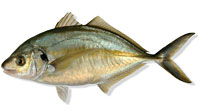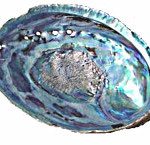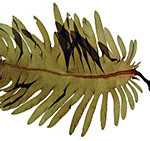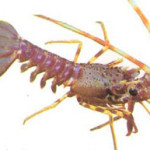
Blue Moki, Butterfish, Blue Cod, Trumpeter
In July 2003, The Earth Policy Institute and others reported that a recent review of marine fisheries, carried out by Ransom Myers and Boris Worm at Canada’s Dalhousie University, had concluded that a startling 90 percent of the world’s large predatory fish stocks, including tuna, swordfish, cod, halibut and flounder, have disappeared in the past 50 years. The study was carried out over a tenyear period, and attributed the decline to a growing demand for seafood, coupled with an expanding global fleet of technologically efficient boats. In addition to numerical decline, the review also concluded that the surviving members of the reef fish population are only one-fifth to one-half the size of earlier individuals.
With the capacity of the world’s fishing fleet now twice the sustainable yield of fisheries, Myers and Worm believe that the global fish catch may need to be cut in half to prevent further collapse. Some of the strategies that could be used to achieve this include the reduction of bycatch, the creation of no-take fish reserves, and the management of marine ecosystems with a goal of long-term sustainability rather than one of short-term economic gain.
There are a number of species in the New Zealand – Temperate Eco-region that are particularly affected, including blue moki, butterfish, blue cod and trumpeter fish.
The blue moki (Latridopsis ciliaris) is a predominantly southern species that mostly school offshore over mainly open bottom. They grow up to 80 cm. The usual colour is blue-grey with shades of brown and one or two large brownish blotches below the dorsal fins. The mouth is small with thick lips and small teeth. These fish feed in very shallow water often after dark.
The butterfish (Odax pullus) is restricted to New Zealand waters, and is more abundant in the south. It inhabits shallow inshore waters where rocks and brown Blue Cod (Parapercis colias) algae are plentiful and feeds mainly on the brown alga Carpophyllum. It reaches an average size of between 30-50cm and is commonly found in shallow, rocky reefs at depths of les than 15m. The butterfish is a popular recreational and commercial target species – fished for primarily by gill net and speargun.
The blue cod (Parapercis colias) lives on clear rocky ground to depths of about 150 m. This species and the New Zealand Snapper are probably the most generalized and least fussy feeders in the region, as both take quantities of every food animal. Large examples are usually greenish blue in coloration, while smaller ones are blotched in varying shades of brown. The smoothly sloped head and snout, short low first dorsal fin and the long second dorsal fin are clear identifying features. Blue cod can grow to 70 cm and belong to the family Pinqguipedidae or sandperches. They are not related to the true or morid cods such as the red cod (Pseudophycis bachus).
The trumpeter (Latris lineata) can grow to in excess of 120cm and feeds on a wide variety of animal life including other quite large fishes. Its general colour is shades of olive with flushes of yellow, and there are three or four yellowish-brown bands along the upper sides. The colour pattern, protruding snout and large mouth are readily observed features. It frequents rocky coastlines to depths of 40m, or clear bottoms down to 200 m.








Social Profiles